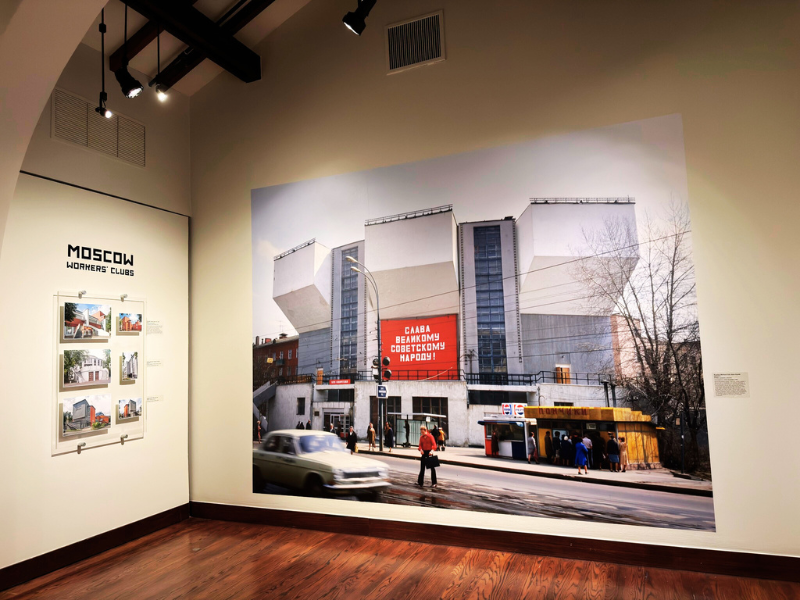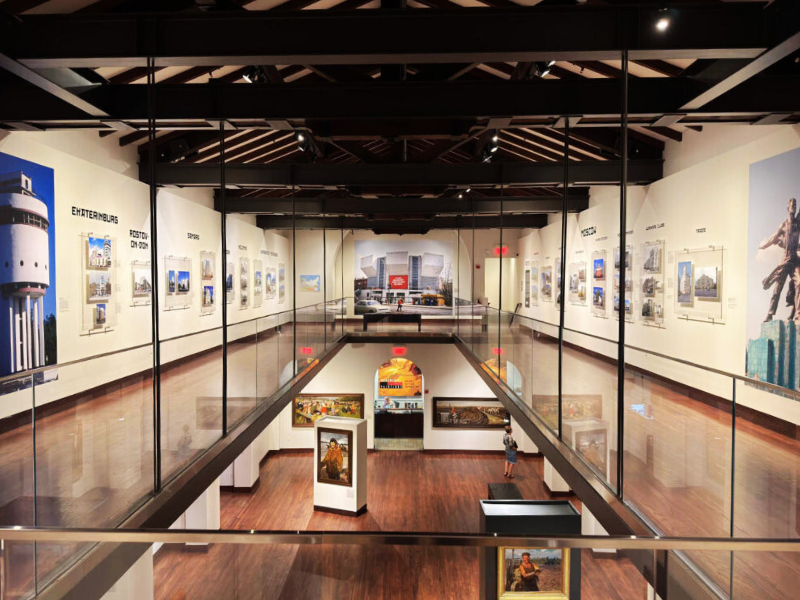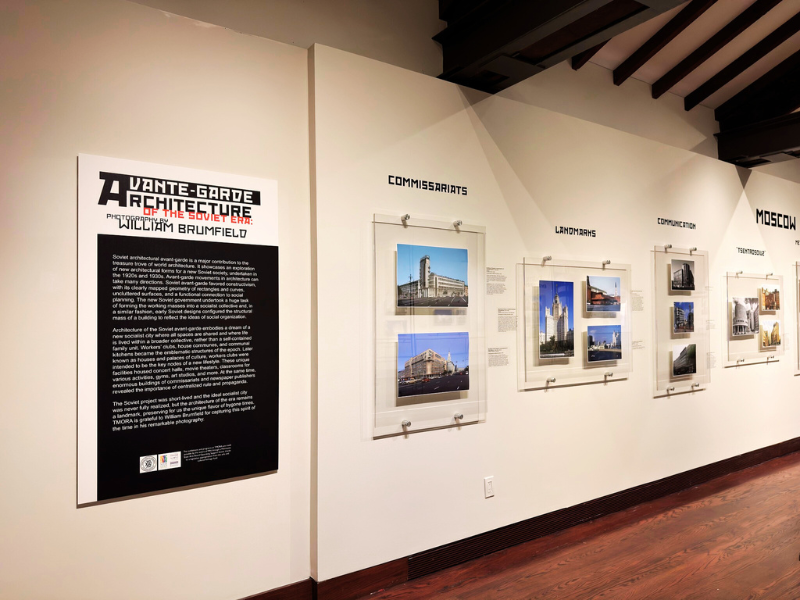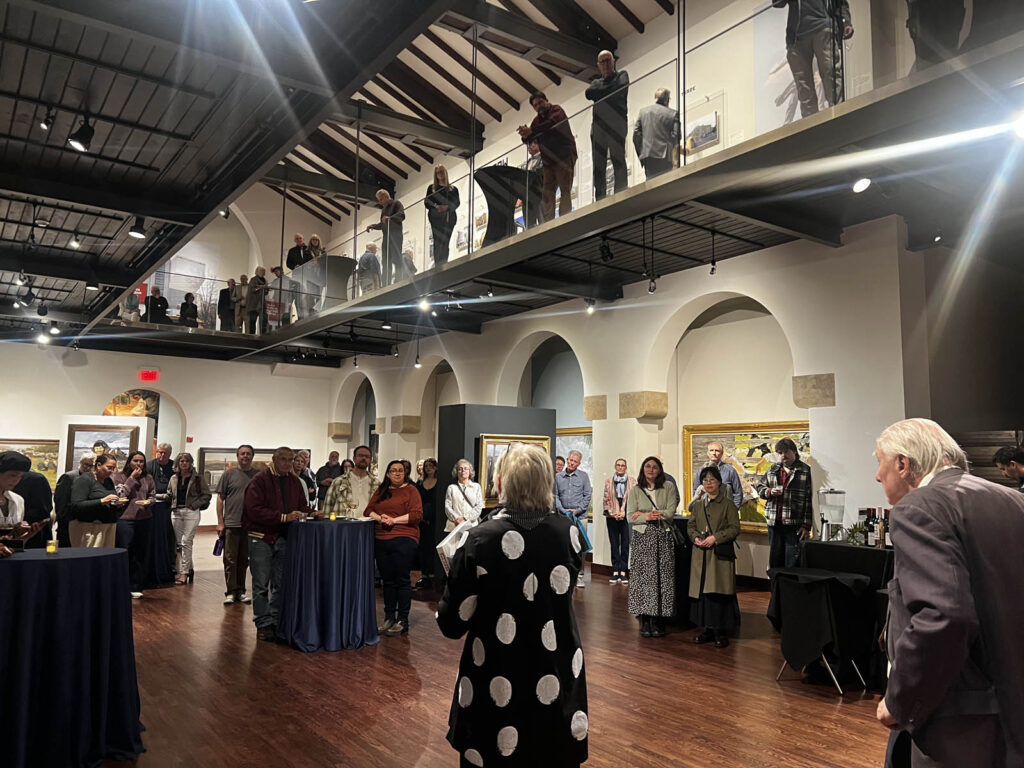Tulane Professor's Photos in Soviet Avant-Garde Architecture Exhibition
Published

A new exhibition featuring the work of Tulane University professor William Brumfield offers visitors a rare glimpse into one of the 20th century's most paradoxical architectural movements: Soviet avant-garde design that embodied both revolutionary idealism and state control.
The exhibition, currently displayed at The Museum of Russian Art in Minneapolis, Minnesota, contains approximately 80 photographs (some of mural size) from Brumfield's extensive archive documenting Soviet avant-garde architecture from the 1920s and 1930s. The exhibit will last until October 12th, 2025.
"There's a fascinating paradox here," said Brumfield, who has spent over five decades photographing Russian architecture. "This state was born of violence and developed a very enclosed notion of who should rule, yet it produced some of the most forward-looking, utopian architecture in history."

The photographs capture buildings that served dual purposes, from workers' clubs designed to provide cultural access to underserved populations, to administrative buildings commissioned by security forces like the Soviet Secret Police (NKVD). Many structures featured extensive glass facades and clean, geometric lines that literally embodied transparency, even as they served an increasingly authoritarian regime.
Brumfield highlights the apartment complex designed by Moisei Ginzburg for the People's Commissariat of Finance as particularly emblematic of the movement's complexity. The linear structure, designed like a ship with streamlined proportions and window strips, included subsidiary buildings for communal laundry, meals and childcare, representing the avant-garde vision of architecture as a "social condenser" that could transform society itself.
"It was meant to be an ideal living space that was both an aesthetic representation and a model for social development," Brumfield explained. The building, located on a major Moscow thoroughfare, has been meticulously restored under supervision of the architect's grandson.
The Soviet avant-garde movement emerged from the convergence of the Russian Revolution's radical political transformation and the country's already-flourishing abstract art scene, influenced by artists like Kazimir Malevich and El Lissitzky. However, the movement faced practical constraints that belied its futuristic designs.
"They had bold ideas on paper, but had to be realized with primitive methods," Brumfield noted. Despite Russia's pre-revolutionary experience with reinforced concrete, the post-revolutionary economy lacked resources for widespread advanced construction technology, forcing architects to use traditional load-bearing walls for their modernist visions.
The exhibition draws from over 310 photographs that were featured in Brumfield's major retrospective at Moscow's Shchusev Museum of Architecture in 2024, coinciding with the scholar's 80th birthday. The photographs span beyond Moscow and Leningrad to document avant-garde buildings across the former Soviet Union, revealing the movement's geographic reach.

Brumfield's access to these buildings wasn't always guaranteed. During the Cold War era, photographing state-sponsored structures carried risks. He recalls being detained outside a building designed by Le Corbusier in central Moscow in the early 1980s, held for 30 minutes while authorities verified his credentials.
"There was always the possibility of being detained when photographing some of these buildings," he said. One particularly memorable shoot occurred in 1994 at the Bakhmetevsky Bus Garage designed by Konstantin Melnikov, which later became the Russian Jewish Museum and Centre of Tolerance. Brumfield captured the interior while it still housed buses, creating cathedral-like images with dramatic lighting filtering through geometric windows.
The current exhibition benefits from years of archival work involving dozens of Tulane students who helped scan and organize Brumfield's vast collection. This digitization effort, intensified during the pandemic, made the images accessible for exhibition purposes.
"Without the base that Tulane provided and the students who helped, these images would not have been accessible for exhibit purposes," Brumfield emphasized.
The museum's setting in a repurposed Spanish Colonial Revival church creates an intriguing contrast with the Soviet modernist photographs. The space features a mezzanine level where visitors can view the images surrounded by exposed wood beams, creating what Brumfield describes as a "dynamic, interesting" environment that enhances the visual impact. As Lena M. Lenček, Professor Emerita of Russian and Humanities of Reed College, noted, “The designer responsible for the installation did a superlative job of harmonizing the look of the ensemble with the governing aesthetic of the architecture….The intelligently chosen typography, the technology of displaying the images, the rhythm of the placement, the gigantic anchoring pieces — enhance the power of the photographs and help tell the complex story.”

Photographer and author, William Brumfield, stands in the far right before a crowd at Avant-garde Architecture of the Soviet Era: Photography by William Brumfield exhibit at The Museum of Russian Art.
Many of the original avant-garde buildings face uncertain futures. In Moscow, some have been demolished due to rising property values, while provincial examples often suffer from neglect due to unclear ownership and maintenance responsibilities following the Soviet system's collapse.
Brumfield hopes the exhibition will reintroduce younger generations to this crucial chapter in architectural history, particularly as emphasis on architectural history decreases in professional schools. The Soviet avant-garde represents when Russian architecture achieved worldwide prominence, influencing the international modernist movement alongside Germany's Bauhaus school.
"It's worth knowing about as part of both Russian history and international modernism," Brumfield said. "The work is there. There's a foundation for exploration — that's really up to each generation to find for itself."
The exhibition demonstrates how photography played a crucial role in spreading avant-garde architectural ideas internationally, while revealing the complex relationship between artistic innovation and political power that defined the Soviet experiment. To learn more about the exhibit visit: tmora.org.
To learn more about Brumfield’s photographs of Soviet avant-garde architecture check out his book “Russian Avant-Garde through the Lens of William Brumfield: Honoring the Master’s 80 years”, released by the “Tri kvadrata” Publishing House. You can also view the William C. Brumfield Photographs of Russian Architecture digital collection on Tulane Libraries’ website.
A live virtual program featuring William Brumfield, renowned scholar of Russian architecture and photographer behind the exhibition Avant-Garde Architecture of the Soviet Era: Photography by William Brumfield, was held on September 10, 2025. The full recording is available here.
For readers interested in a deeper dive, the complete transcript of the question-and-answer session with Brumfield is also accessible here.
By Rebecca Gipson


